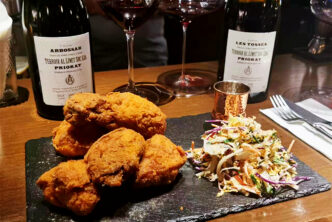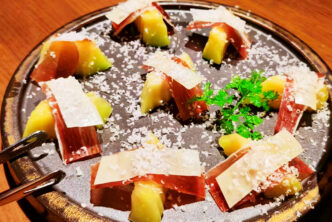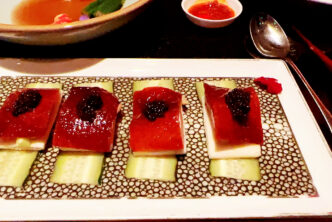L’ARCANGELO
Via Giuseppe Gioacchino Belli, 59
Roma
Tel. +39 06 3210992
The l’Arcangelo is one of Rome’s best dozen restaurants or so. There are undoubtedly more elegant and upscale addresses in the eternal city (in fact, most of them very disappointing), but few if any offer as complete a dining experience as does this true dining gem. L’Arcangelo takes it name from that of its chef-owner, Arcangelo Dandini, that has been running the place with his talented sommelier wife Stefania since the opening back in 2003. Given that an arcangelo is also the Italian word for “archangel” you cannot help but think that it is also a tongue-in-cheek play on words of the food served there.
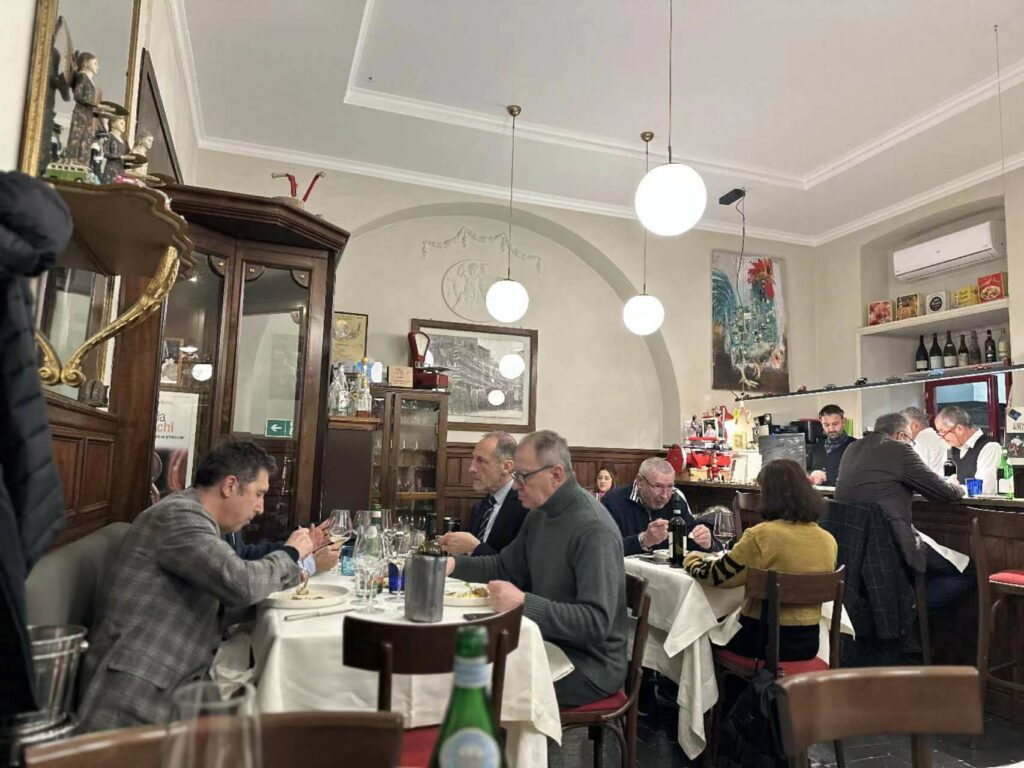
Dandini’s cuisine is a “cuisine of memory”, interpreted by a self-defined “contemporary and metropolitan chef”, given that he has taken high-quality local ingredients (one of his secrets, as his restaurants benefit greatly from some of Rome’s best sourced food ingredients that contribute in no small measure to his success), and uses them to kick up local recipes up a notch or two with twists that are not there for their own useless sake. His is not the easiest of cuisines to understand and sometimes the juxtaposition of aromas and flavours can startle or leave you scratching your head. But Dandini can do so because he knows what he’s doing, having quite the resumé. He trained in his formative years in Milan’s Aimo e Nadia (one of the country’s twenty best restaurants or so) and at the Ascot, also well-regarded by sybarites in the know. He then ran the famous Richelieu restaurant in Monte Porzio Catone on the outskirts of Rome, a place that was turning heads with its cuisine already back in the 1980s. To help you understand why I do what I do at the level I do it at, in reference to Italian wine and food at least, you need to know that I used to dine regularly at the Richelieu back then when I was a university student in Rome. Already then Arcangelo was creating buzz because of his uncanny ability to match seemingly disparate flavours on the same place, and in bringing a very innovative twist to traditional recipes. He then moved to Viareggio where he was at the family-run hotel restaurant Dandini, prior to taking the first step in his stratospheric rise to fame. That first step was undoubtedly when he took over the running of the Simposio restaurant in Rome, owned by the Costantini family that run the famous enoteca of same name located next door. The Simposio is a milestone in the history of modern Roman cuisine, quickly becoming a must-go to address of all Roman sybarites and epicures worthy of their taste buds. In 2003, he moved on by buying his own place and creating the Arcangelo, one of the capital’s best restaurant-bistros that is now the meeting point of food and wine lovers of all nationalities. But Dandini did not stop there: ten years ago (in 2013) he opened Supplizio, one of the city’s best street food spots, and in November 2022 he opened Garum in London, already the talk of those in the know in town. Most recently he has started up at the Chorus restaurant in Rome, another hit. All the while writing books on Roman cuisine and travelling the world spreading the word about the authentic cuisine of Rome, not at all a given as anybody who loves food and wine knows. Just think that years ago one of the USA’s most famous publications found it acceptable to publish a recipe of carbonara that included tomatoes, which is not just hilarious but wrong and downright sickening. I mean, there has to be a limit to creativity for creativity’s sake, or if you prefer, not to mince words, to human stupidity. On the same note, if you can believe it, about fifteen years ago I was asked to write a foreword to a book on Roman cuisine: when I read the proofs, I couldn’t find any mention of the quinto quarto (the innards that are the basis, the hallmark even, of Rome’s cuisine) and no recipes that featured them. When I asked the author if perhaps I had been sent a manuscript that had some pages missing, I was told straightforwardly that no, nothing was missing, it is just that she/he (I’ll be charitable and make it hard to identify the person in question) felt there was no need to write about this part of Roman cuisine because nobody in their country liked to eat innards. Sure, go right ahead, it’s a free world: and while we are at it, let’s neither include Waterloo when talking about Napoleon nor of biodynamics when discussing Rudolf Steiner’s life. I mean, might as well. Clearly, I did not write that foreword.

The dishes
Supplizio. Supplì di riso e crocchetta di patate affumicata
Viaggio a Rocca Priora (Uovo, erbe spontanee, polline e amarene)
Cannacce al sugo di coda alla vaccinara
Baccalà in guazzetto alla romana, prugne e frutta secca
Trippa di vitello, menta e pecorino
Selezione di formaggi
Cioccolato bianco, zenzero, capperi e olio evo
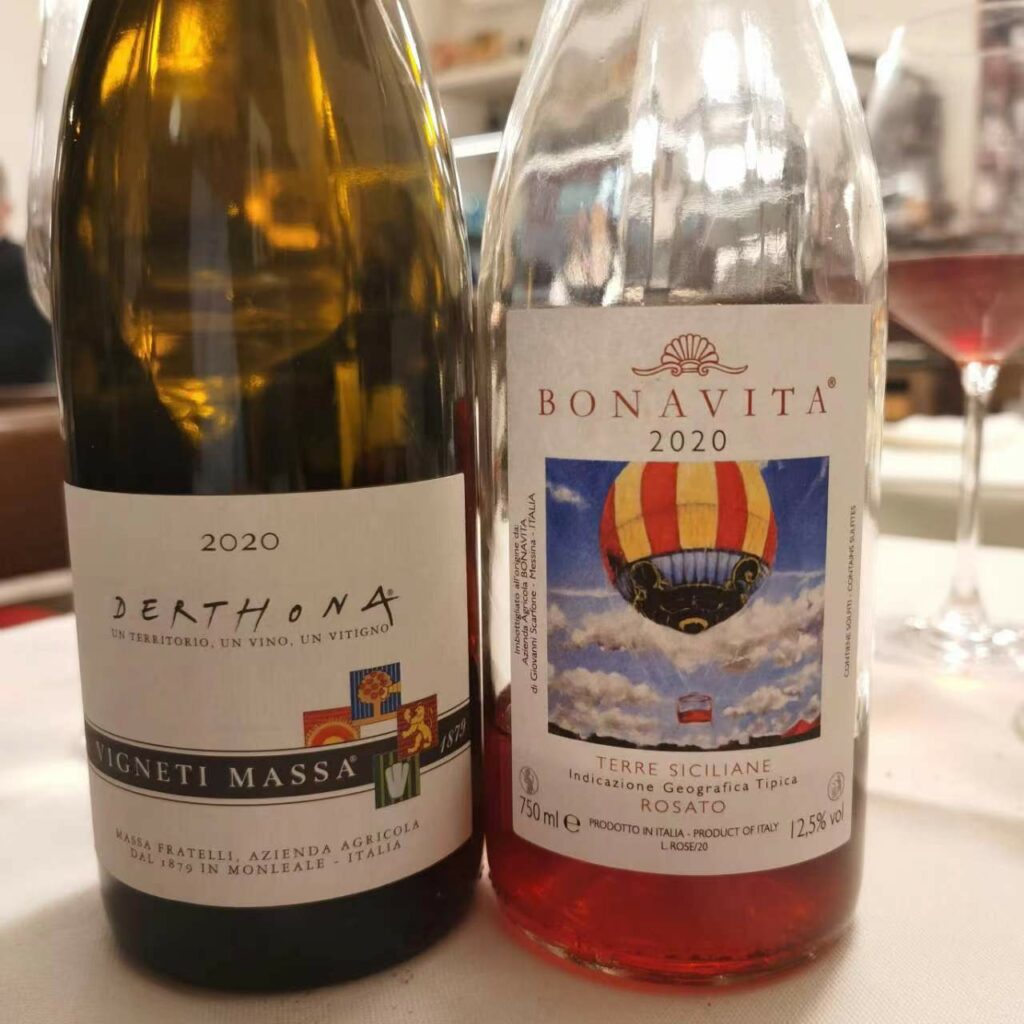
The wines
Massa 2020 Timorasso Derthona 94
Bonavita 2020 Rosato Terre Siciliane 95
On my most recent meal at l’Arcangelo, after two and a half years of Covid-induced exile from one of my favourite dining stomping grounds, I found the place slightly changed. Not for better or for worse, but different than I remember it. The lighting is now much stronger and brighter, for one. The wine list, as always brilliantly taken care by Arcangelo’s wife Stefania, though just as idiosyncratic and unique as it always was, now features more local wines and fewer international ones. (Mercifully, the little toy cars that symbolize l’Arcangelo are still gracing all the tables, so you get to go back to your childhood while waiting for your food.) Fabrizio is still running the dining room with his customary quiet and discreet manner, a perfect maître. Hard to pick a favourite dish, though the tripe was perfect as always (with the use of pennyroyal, as it should be, and not mint, as is all too often done, wrongly). The salt cod (baccalà) was also delicious, but the winning dish of the night was, hands down, the cannacce al sugo di coda, a classic dish of Rome that is at once hearty, soulful and refined. The sauce itself, basically a long- and slow-cooked braised oxtail stew, is a meal in itself and would make the “winning dish of the night” list any time it’s served. As for the wines, we could hardly go wrong with our two selections, which are two of Italy’s best wines in their respective categories. The Massa 2020 Timorasso Derthona is a classic from the man who put the Timorasso grape variety on the world map. Yet another in along line of Italian native grapes that had been completely forgotten and cast aside over the twentieth century, it was only in the early 2000s that Walter Massa brought a Timorasso wine to the attention of local wine writers: I well remember a tasting in Rome back in 2000 or 2001 when a number of Italian wine experts, myself included, attended a tasting where this wine was first shown and I can guarantee you, 100%, that literally nobody in the room neither knew anything about the grape nor had tasted one of its wines. That is how recent the ascension to fame of Timorasso has been. The 2020 Derthona is superb: rich, ripe and yet lifted, with precise ripe yellow fruit, honeyed and herbal nuances that make it resemble to a very high-quality classically dry Alsatian Riesling (think of something Josmeyer might make and you are not far off track). It is a far cry from some of the overly herbal and mineral wines that seemed almost as if they were corked that typified vinifications of this difficult grape variety back in the first decade of the twenty-first century. Just as good and actually even better given the mostly sorry wine category it belongs to, the Bonavita 2020 Rosato Terre Siciliane is a work of art. Always one of Italy’s five or so best rosé or rosato wines each year, Boanvita makes it with Nerello Mascalese, Nerello Cappuccio and Nocera in the Faro denomination of northeastern Sicily (as the denomination does not contemplate a pink wine category, it has to be bottled as a “Terre Siciliane” instead of a Faro wine as it really should be). Deep pink and in fact almost pale red in colour, this is dead-ringer for a good quality villages level Pinot Noir from Burgundy, but leaner and fresher in the style of any self-respecting pink wine. A panoply of flowers, red berries and minerals jumps from the glass, then follows through on the vibrant, focused and long finish that will have you going back to the bottle again and again. Just do yourself and friends a favour and don’t make the mistake of over chilling this beauty because it really is a pink wine of way above average precision and complexity and it would be a shame to dumb it down by serving it too cold.

Wine, food, service and ambience: at l’Arcangelo, they are used to hitting one home run after another. And so it was on this night, yet again.

 English
English
